Constancy is a quality that, of course, is appreciated by each of us, only sometimes changes happen for the better. For example, at times there may be an acute desire to change something in the apartment.
- Linoleum: composition and features
- The choice of paint and tools
- Surface preparation
- Staining recommendations
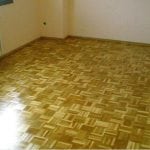
However, there is no extra money for expensive new things and good repairs, as always happens in such cases. Then it’s better to either minimize it by moving furniture or buying new curtains, or go ahead and allow yourself a little more.
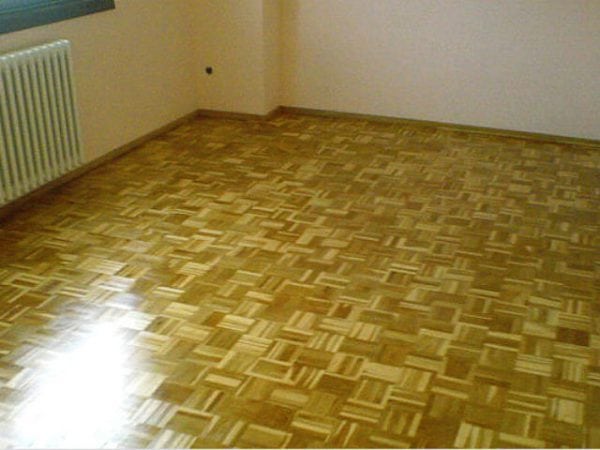
Perhaps this does not immediately come to mind and even seems a little wild, but why not get down to painting linoleum, which has already managed to get pretty worn out and lose its appearance? One can only wonder how much this can transform the interior of a room or an apartment as a whole! But how and how to paint linoleum in order to achieve the highest quality result, if the repair is carried out at home and by a lay person?
With the intention to understand this issue and get useful step-by-step tips, first of all, you need to consider what linoleum is and what it has advantages and disadvantages.
to contents ↑Linoleum: composition and features
Despite all the progress of technology, today one of the most popular flooring is linoleum. This alignment of things is very predictable, because in terms of price and quality, buying linoleum is a profitable solution in all respects.
Of course, there are always more expensive alternatives, such as parquet, laminate or even high-quality wooden floors. But when it is not possible to consider other options, the eye dwells on this affordable floor covering, which meets all the necessary requirements and tasks.
In particular, the positive aspects of linoleum, which made it so popular, include:
- convenience and ease of use: it is easy to wash with any detergent or even water, since it does not need special care;
- high moisture resistance: a humid environment or puddles of water will not affect the functionality at all;
- universality: suitable for an ordinary apartment, household or industrial premises;
- low thermal conductivity: will provide a warm floor;
- high sound insulation: an additional barrier rather for neighbors from noisy children;
- plasticity: it’s nice to walk barefoot on such a floor, because it absorbs loads when walking;
- non-slip surface;
- long term of operation;
- easy assembly and disassembly;
- the presence of many colors and patterns.
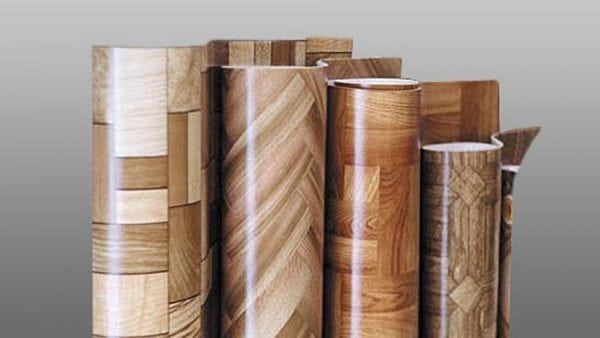
Each of us knows firsthand the benefits of linoleum: practically there is not a single person who has never lived in the room in which this floor material is laid. But linoleum also has some drawbacks, which, with the proper approach, instead of enemies, can become allies in this finishing war.
All painting work begins the same way: first you need to determine exactly what surface to paint. This nuance is very important, since the correct selection of paints and working tools depends on it.Not knowing the surface material, you can not only waste money and time, but also spoil the flooring itself. Those who neglect such subtleties, on their bitter experience, reap the fruits of frustration: the paint peels off after a while. So it is best to approach this matter thoroughly and figure it out yourself.
Linoleum consists of several layers:
- protective, or wear layer - is a thin layer of transparent polyvinyl chloride (PVC), linoleum durability and its mechanical stability depend on its thickness;
- the picture layer is diverse and of any color, which makes it easy to choose the right one;
- front layer - a layer of PVC, which serves as the basis for applying the picture;
- a fiberglass layer is the basis of linoleum, on which all layers are collected, sets the strength of the entire linoleum;
- substrate - the last layer of foamed PVC.
Indeed, the quality of linoleum itself depends on the thickness of each layer, therefore, the thicker it is, the better. However, dyeing a thick and soft material will not work. Unfortunately, the paint, without possessing such elasticity, peels off in a short period of time. Therefore, it’s even good that the caked linoleum will have to be painted, which is tight to the surface and quite hard.
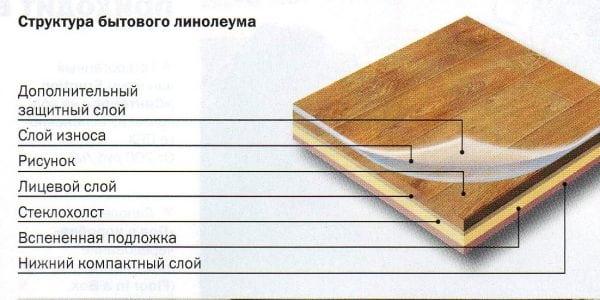
It is also worth considering certain properties of linoleum, namely the fact that the protective layer is often rubbed with wax, which, if not removed, will prevent the paint from drying out. Therefore, pre-painting necessarily requires preliminary surface treatment.
to contents ↑The choice of paint and tools
What material will have to work, determined. Now it’s the turn of the coloring compound. What paint is most suitable for painting linoleum? The most common types of paints for painting linoleum are oil, alkyd and acrylic. A little more about each of them.
- Oil paint is a budget option and quite outdated compared to current advanced technologies. It has good adhesion (adhesion), lies flat on the surface. However, there are also disadvantages: a strong smell, both during painting and for a long time after, dries for a sufficiently long time, about a day, as opposed to modern paints, and also quickly erases, therefore it requires periodic updating. Although oily paint is one of the options for painting, if possible, you should choose other, modern types of coloring solutions, even if a little more expensive.
- Alkyd paint is much more advanced than oily. Its base is alkyd varnish. It has high elasticity, durability and resistance to water, light and temperature extremes. This paint dries in a few hours, which simplifies the painting of linoleum. It perfectly preserves color for a long period of time, and the colors themselves are not only diverse, but also saturated. One of the minuses: when painting, it also has a strong odor. But, nevertheless, alkyd paint is more suitable for linoleum, more resistant to mechanical damage and abrasion.
- Acrylic paint is a good option for painting linoleum. Reliable to use, with high adhesion to many surfaces and abrasion resistance, therefore, it will last for many years. In addition, the paint is good at resisting chemicals.
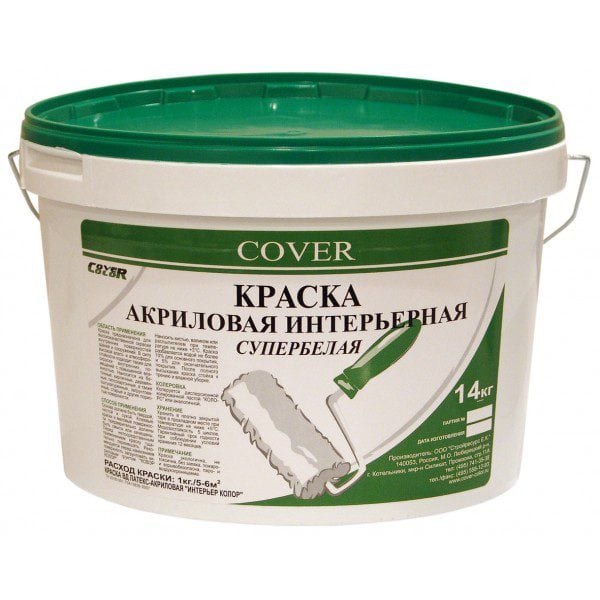
Of all these paints, perhaps acrylic is the most practical. So they are perfect for linoleum, not only in the rooms, but also in the kitchen. The paint is easily washed off with water, if you accidentally paint another interior item, it does not smell in the process, but dries within a few hours.Conclusion: this is a quality paint that is worth the money.
Of course, there are other mixtures that can be used for painting linoleum, but they are used less often in view of not justification of the undertaking (high consumption and significant price). An example of such a paint is chlorinated rubber enamel.
Tools are standard in any painting business - roller or brush. Together with them you need to buy or get from the balcony:
- a tray or tray for diluting paint;
- bucket with water;
- clean rags;
- a brush;
- soda;
- sealant or putty;
- masking tape;
- primer or varnish;
- gloves and mask.
Surface preparation
In order for the updated linoleum to please the eye for a long time, and the paint does not crack or scratch over time, first you need to properly process the floor material. The task is to remove all factory wax from the surface and clean it from dirt and dust. Unlike preliminary manipulations with a laminate or proliferated wooden parquet, it is much easier and faster to do this.
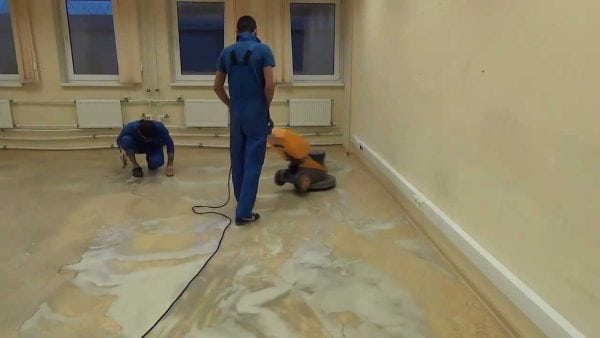
Surface preparation before painting takes place in the following order:
- To clear a surface. Not only from dirt and oily stains, but also from wax. To clean the wax, a glass of soda is added to a bucket of hot water and the floor is washed with this calcined solution. To achieve the best effect, use a brush.
- Wash the floor with water without leaving streaks. To dry.
- Check for cracks and delamination of linoleum. If there is, then use putty to seal up. Seal the sealed joints with acrylic sealant.
- Prime the surface. As a primer, use either a regular primer or varnish. Painting can be done without this stage, but this way the paint will lie smoother and better adhere to linoleum.
After the primed surface has dried, you should start painting linoleum.
to contents ↑Staining recommendations
So, at your fingertips there is everything you need to start the staining procedure: the right can of paint, work tools and creative enthusiasm.
Painting linoleum, as well as pre-treatment, is divided into several main stages:
- Around the entire perimeter of the wall is applied masking tape to protect against accidental painting. By the way, with the help of this tape and or stencils, you can easily feel like a designer, for example, dividing the floor into strips or creating your own unique pattern.
- Thin the paint with a solvent, as it should be mixed. Pour into a tray or tray.
- Painting begins in the direction from the far wall to the door. Wait for the paint to dry completely.
- Apply a second coat. Wait for drying.
If you closely adhere to all the above recommendations, the paint on linoleum will need to be updated only if the soul asks for new changes.
Linoleum painting is an enterprise that only at the beginning seems doomed to failure, but, in the end, turns into an economical find for a prudent owner. Such a way out of the situation will help to renew the old linoleum, and with the proper design approach, will make it a real decoration of the apartment. In general, the game is worth the candle!





Hello! Very interesting and useful advice on painting linoleum! I don’t think of any difficulties. I’m just repairing and I’m thinking of using your instructions !!! I will inform you of the result at the end of the work, maybe with a photo !!!
Slippers stick to acrylic painted linoleum, three days have passed since the day of painting. Who knows why and what needs to be done